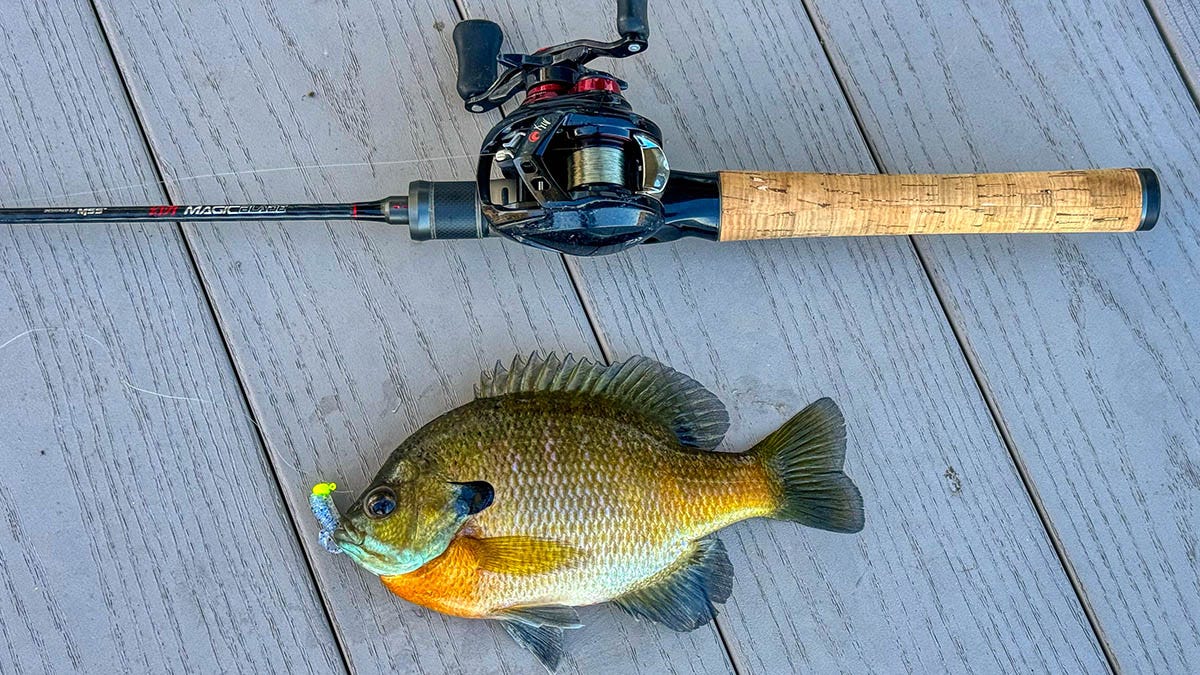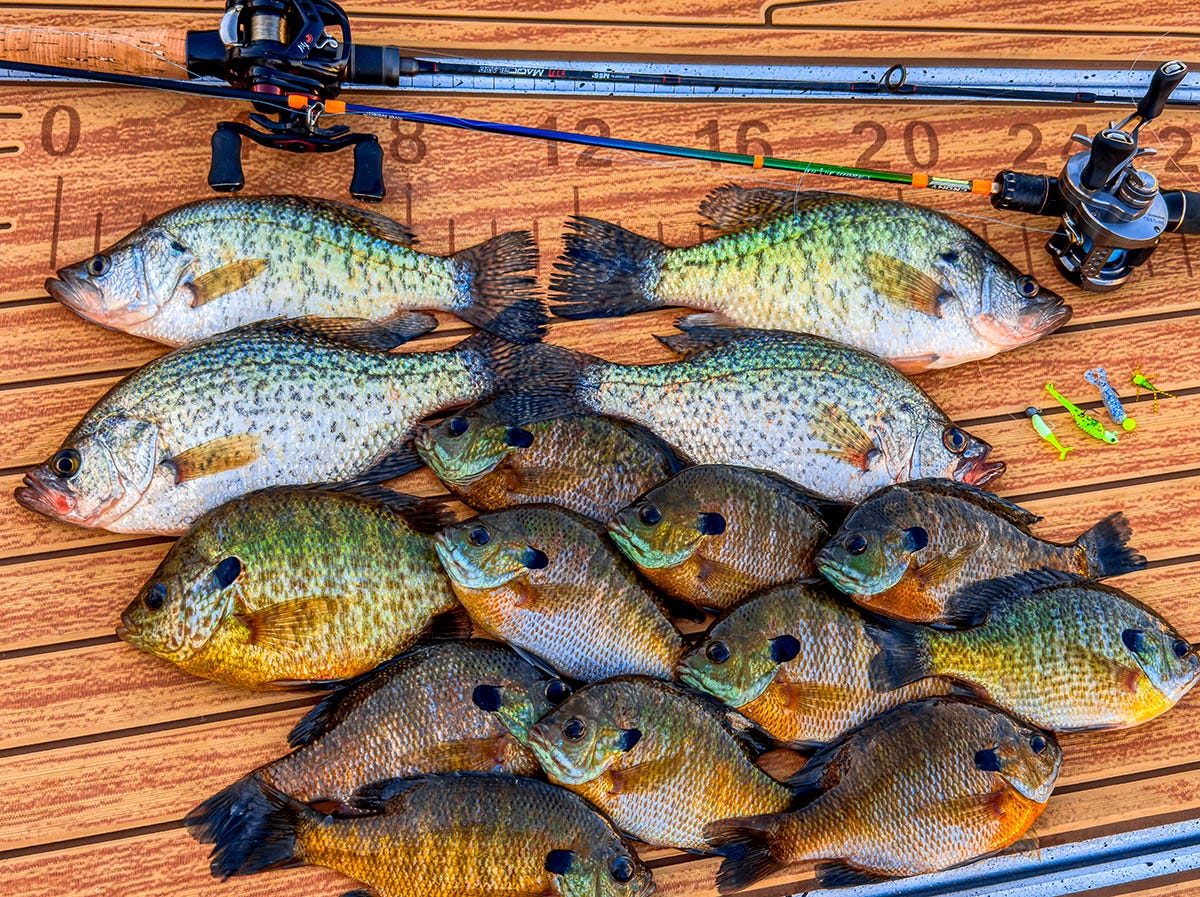Fishing for Fall Panfish | Follow the Migrations
This is what I've learned over the last couple of years about fall bluegill and shellcracker fishing and how they transition from summer to fall to winter
Most folks who follow me on social media or talk fishing with me know that I’m passionate about helping bring trophy panfish fishing to the mainstream. I’m an avid angler and have spent the better part of 20+ years writing some of the top ranked articles around bass fishing in the space.
After doing that for two decades, I’ve been seeking new pursuits in fishing aimed at expanding my knowledge of different species like crappie, bluegill, shellcrackers and trout. Two years ago I decided to follow crappie from month to month on major reservoirs to learn their migrations, feeding habits and behaviors to catch them consistently all 12 months of the year. The past year and a half, I have applied the same to chasing panfish, namely bluegills and red ear.
So I wanted to share some of my findings related to their migrations from summer to fall as well as from fall to winter. I’ve shot some videos to talk through all of this as well. So I’ll share the first of many on the topic of panfish migrations in this piece here.
THE MOVEMENT
As is the case with most species of freshwater fish, panfish like bluegill and shellcrackers migrate from deeper cool waters in the summer to cooler shallow waters in the fall. And they move into these areas en masse. The schools of panfish in the fall and winter are actually way bigger than you will find in the spring or summer. And this can make for incredible fishing for several months if you know how they move.
As the bluegills move from deeper waters when the waters cool in the fall. They will come shallow to feed on shells and micro organisms like macro invertebrates. They do this to feed up and I also believe to sun before winter. I say this because last fall I found several pockets loaded with giant bluegill that were “rafting”.
In other words they were just barely under the surface in shallow water seemingly just sleeping in place. I think they were feeding shallow and then just absorbing the suns heat in the shallow calm waters. For almost a month I could come every evening and fish from a dock or the bank and catch them until I got tired of it and leave with a few big gills for supper.
This seemed to happen when the water temps approached 60 degrees. As it got below 50 degrees into the winter, these schools left and moved out deep where they spent the whole winter before coming back shallow in the early spring period to feed again before their spawn.
FALL IS PHENOMENAL
When these fish came to the shallow calm pockets in the fall, the fishing was the best I saw all year for bluegills and shellcrackers. I caught bigger shellcrackers in the spring and summer. But I caught more of them in the fall. They were mixed in with the bluegills in these huge flotillas shallow. And fell easy pray to my micro offerings.
I caught them at well on three simple lures and could have caught them on a wide variety I felt. But the fishing was so good with these three I just never tried anything else. And because what I used almost never tears up. I could rig a couple rods and go every afternoon or lunch break for an hour or two and get all the gills I wanted to eat easy.
I would fish a 1/20 ounce Z-MAN Micro Finesse Head with either a Micro Finesse GoatZ or a Micro TRD. And I would alternate those with a hand-tied tungsten bug called a Gill Getter from my friend Tom at Starkey Flies. Fished on 2-4 pound lines, I would catch gills nearly every cast just letting the jigs sink and then either slowly reeling along the bottom or using a reel drop retrieve to pulse up and settle back to catch the gills obviously feeding along the rocky bottoms.
The Z-MAN Micro Finesse baits simply make panfishing so much more enjoyable. No fuss or mess with live bait. No baits tearing up and having to be reset after every bite. You lock the bait on the right head, glue it if you want, and just fish without ever having to mess with your baits. And I believe they actually compress better than regular plastic so you get a better hook in the fish. And I know if one bites a Micro TRD or a Micro GoatZ, then it’s going to likely be a better gill.
WHERE TO LOOK FOR FALL PANFISHING
So I know bluegills and shellcrackers suspend around deep wood cover in the summer months and then they leave those places to come shallow to feed on snails and mussels as well as other small microorganisms shallow. So I look for protected pockets just off the main lake or adjacent to where deep brush had the gills congregated in the summer. They migrate back into these secondary pockets to feed.
A good place to look is the pockets where they spawned in the spring. And work out from there. They won’t be where they spawned most likely but instead along the shell covered rocky bottoms leading to those areas. On Kentucky and Barkley, the lakes falling 5 feet cause the fish to get away from the mud ring that is along the bank and move more towards lead in banks and the middle of the pockets that have harder bottoms than the ring around the pocket that is mostly soft bottom at winter pool.
So focus on hard spots likely to have shells (snails, muscles, and other macro invertebrates).
As winter sets in, the fish don’t go back to the deep brush as much as they want to go deeper in the winter. They go past most brush to deeper flats off the main lake where they can shelter and feed in the warmer waters away from freezing surface temperatures.
But until then you can light them up going shallow again and finding shell covered areas in flat pockets that get full sun and allow them to warm up before winter slows the lake down to a slow crawl.
But guess what, you can waylay them even better in the winter. More on that to come as well.






